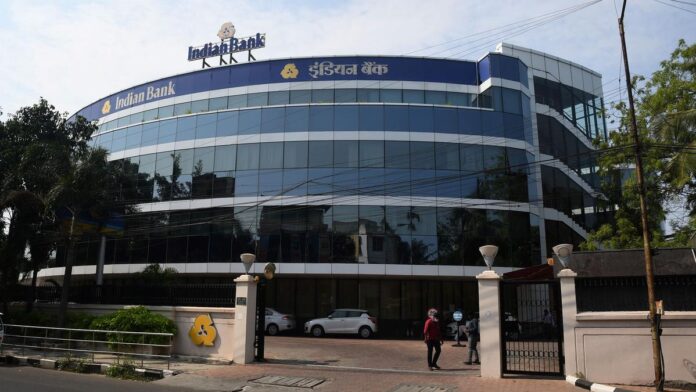Indian Bank, which was established on March 5, 1907 and officially started operations on August 15, 1907, has a legacy of over a century. It has navigated several economic crises, becoming a leading financial institution in India. As on September 30, 2024, Indian Bank is the seventh largest public sector bank with a total business of ₹12.44 lakh crore.
Public opinion sought
On November 2, 1906, a circular went out, inviting people to share their views on starting a “Native Bank in Madras”. The immediate trigger was the failure of the Madras-based Arbuthnot Bank in 1906, which caused misery to depositors, with a cascading effect on the local economy, according to details from the bank.
“Also, at the time of the failure of Arbuthnot Bank, the Swadeshi Movement was launched at the Calcutta session of the Indian National Congress in 1906. The establishment of the bank reflected the nationalistic desire for a reliable, Indian-managed financial institution,” say Indian Bank officials. V. Krishnaswamy Iyer, a prominent Madras lawyer, played a pivotal role in the establishment of the bank. S.Rm.M. Ramaswami Chettiar, one of the bank’s first directors, went on to become its inaugural chairman. Raja Sir Annamalai Chettiar, a highly respected leader, joined the board in 1915, contributing significantly to its growth and development.
Head office at Parry’s Corner
The head office was initially opened in Parry’s Buildings at Parry’s Corner. As the operations grew, the head office was shifted to the Bentinck’s Building on North Beach Road (now Rajaji Salai) in July 1910. Subsequently, it was shifted in May 1970 to 31, Rajaji Salai (now renumbered as 66, Rajaji Salai, Chennai-600001). The bank started out with an initial capital investment of ₹8 lakh.
In 1907, the bank’s emblem featured a banyan tree, symbolising overall progress, expansive growth, and continuous prosperity. Another component of the emblem was the frontal view of an elephant, with a long trunk symbolising the bank’s strength. In July 1978, the bank adopted its current logo, featuring three arrows that symbolise savings, investment, and surplus. The bank opened its second branch in Madurai on December 14, 1908, followed by the third in Coimbatore. It expanded internationally with the establishment of its first overseas branch in Colombo, Sri Lanka, in 1932. It went on to open a branch in Singapore in 1941.
Before Independence, Indian Bank played an important role in financing local businesses. In 1947, the bank had 73 branches with a total business of ₹27.85 crore and a net profit of ₹0.78 crore. After Independence, it financed industries and offered financial services. The bank’s business, which stood at ₹27.85 crore in 1947, grew to ₹161.43 crore by the time of its nationalisation in 1969.
Accounts and deposits
In the 1950s, the bank introduced savings and current account services, followed by fixed deposits in the 1960s. The 1980s marked the arrival of ATMs and debit cards, and in the 1990s, online banking and home loans were introduced.
Over the years, the bank acquired the businesses of Royalaseema Bank, Bank of Alagapuri, Salem Bank, Mannargudi Bank, and Trichy United Bank. In 1990, the bank acquired the Bank of Thanjavur that had a business of ₹114.64 crore. And the most significant recent merger was the amalgamation of Allahabad Bank with Indian Bank. The merger was completed on April 1, 2020.
Indian Bank came out with its initial public offering in February 2007. The bank had offered 8.5955 crore equity shares, of which 10% were reserved for the employees. The issue was over-subscribed 32.03 times and the issue price was ₹91. The bank mobilised a total ₹762.14 crore (₹85.95 crore in equity capital and ₹696.9 crore in share premium). After this issue, the Indian government’s holding in the share capital stood at 80%.
Indian Bank was officially listed on the Bombay Stock Exchange (BSE) and the National Stock Exchange (NSE) after the initial public offering. On the listing day, the equity shares of the bank touched a high of ₹105 in the BSE and ₹100.25 in the NSE.
The bank took its maiden step in technology adoption during the 1980s by introducing ATMs and electronic fund transfer. In the 1990s, the bank embraced ALM-TBC, taking its first step towards digitisation. It became a forerunner in introducing tele-banking and online banking. During the 2010s, the bank focused on expanding digital services, launching mobile wallets. At the same time, the bank re-doubled its efforts at financial inclusion in rural areas, empowering under-served communities with digital banking tools. And more recently, the bank has embraced artificial intelligence (AI) and partnered with fintech companies.
Now, the bank is headed by Shanti Lal Jain, who is the Managing Director and Chief Executive Officer. As on September 30, 2024, the bank has 5,856 domestic branches: 1,983 rural branches, 1,532 semi-urban branches, 1,174 urban branches, and 1,167 metro branches. The bank also operates three overseas branches and has one International Banking Unit at Gift City in Gujarat.
The official data show the bank caters to the needs of over 100 million customers with 40,671 employees. Lending to individuals, small businesses, and public sector enterprises is the bank’s major business.
Demand may increase
The bank also focuses on providing customised solutions to corporates and government departments. In an email, the bank officials told The Hindu that the demand in retail banking and agriculture is expected to rise, driven by the growing economy and increasing financial inclusion in rural areas. Over the next two years, the bank plans to enhance its digital services and continue expanding its mobile banking, internet banking, and other online services.
The bank’s net profit, which stood at ₹753 crore (on a stand-alone basis before the amalgamation of e-Allahabad Bank) for the year ending March 31, 2020, surged to ₹8,063 crore for the year ending March 31, 2024. In the first half of the current fiscal (September 2024), the bank reported a net profit of ₹5,110 crore.
Published – December 22, 2024 10:51 pm IST
